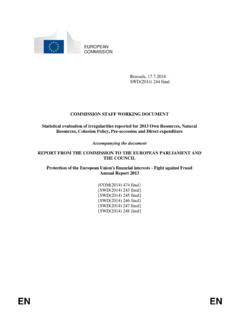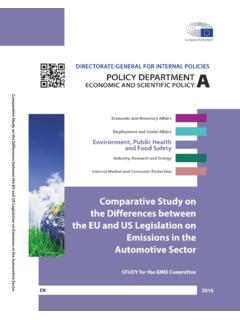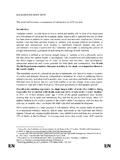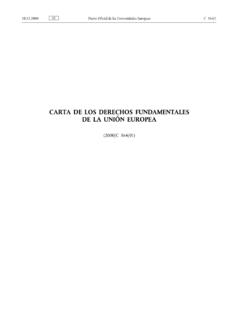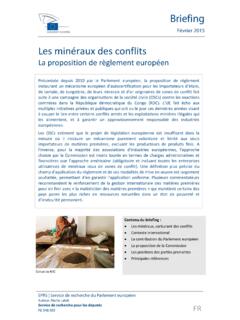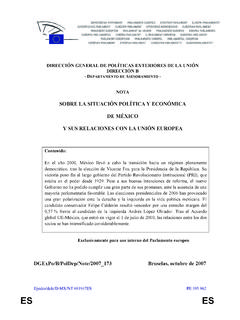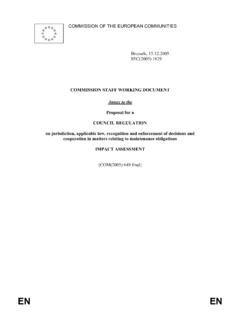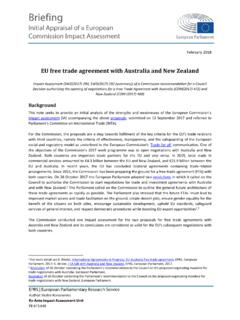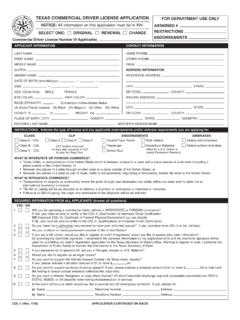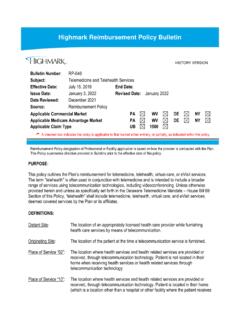Transcription of Ten technologies to fight coronavirus
1 IN-DEPTH ANALYSIS EPRS | European Parliamentary Research Service Author: Mihalis Kritikos Scientific Foresight Unit (STOA) PE April 2020 EN Ten technologies to fight coronavirus I Ten technologies to fight coronavirus As the coronavirus (Covid-19) pandemic spreads, technological applications and initiatives are multiplying in an attempt to control the situation, treat patients in an effective way and facilitate the efforts of overworked healthcare workers, while developing new, effective vaccines. This analysis examines in detail how ten different technological domains are helping the fight against this pandemic disease by means of innovative applications. It also s heds lig h t on the main legal and regulatory challenges, but also on the key socio-e t h i cal dilemmas that the various uses of these technologies pose when applied in a public-health emergency context such as the current one.
2 A scan of the technological horizon in the context of Co vid-19 indicates that technology in itself cannot replace or make up for other public policy measures but that it does have an increasingly critical role to play in emergency resp o n ses . Covid-19, as the first major epidemic of our century, represents an excellent opportunity for policy-m a k er s and regulators to reflect on the legal plausibility, ethical soundness and effectiveness of the deployment of emerging technologies under time pressure. Striking the right balance will be crucial for maintaining the public's trust in evidence-based public health interventions. EPRS | European Parliamentary Research Se v ic e II A UTHOR This in-de pth analysis has been written by Mihalis Kritikos of the Scientific Foresight Unit (STOA) within the Directorate-General for Parliamentary Research Services (EPRS) of the Secretariat of the European Parliament.
3 The author is grateful to the following colleagues for reviewing the report: Philip Boucher, Samue l Gre gory-Manning, Christian Kurrer, Sara Suna Lipp and Lieve Van Woensel. To contact the publisher, please e-mail stoa@ u. LINGUISTIC VERSION Original: EN Manuscript comple te d in April 2020. DISCLAIMER AND COPYRIGHT This document is prepared for, and addressed to, the Members and staff of the European Parliament as background material to assist them in their parliamentary work. The content of the document is the sole responsibility of its author(s) and any opinions expressed herein should not be taken to represent an official position of the Parliament. Reproduction and translation for non- commercial purpose s are authorised, provide d the source is acknow ledged and the European Parliament is given prior notice and sent a copy.
4 Brussels European Union, 2020. Cover photo credits: ffikretow / Shutterstock. com . PE ISBN 978-92-846-650 4-4 doi: QA-02-20-2 47-EN-N u/stoa (STOA website) (intranet) (internet) (blog) Ten technologies to fight coronavirus III Executive summary As the coronavirus pandemic (Covid-19) evolves, technological applications and initiatives are multiplying in an attempt to stop the spread of the disease, treat patients and take the pressure off overworked healthcare workers, while also developing new, effective vaccines. At a time when everyone needs better information, including epidemic disease modellers, state authorities, international organisations and people in quarantine or maintaining social distancing, digital information and surveillance technologies have been unleashed in an unprecedented manner to collect data and reliable evidence to support public health decision-making.
5 Artificial intelligen ce, robots and drones are being deployed to help track the disease and enforce restrictive measures; while scientists are frantically applying gene editing, synthetic biology and nanotechnologies in a bid to prepare and test future vaccines, treatments and diagnostics. Blockchain applications can track contagion, manage insurance payments, and uphold medical supply chains. Furthermore, 3D printing and open-source technologies seem capable of sustaining the effort of governments and hospitals around the world to meet the increasing need for medical hardware ( facemasks, ventilators and breathing filters) and optimise the supply of the necessary medical equipment. At the same time, telehealth technologies offer a cost-effective means to slow the spread of the virus and to maintain hospital capacity by operating as a possible filter, keeping those with moderate symptoms at home and routing more severe cases to hospitals.
6 Presenting a non-exhaustive overview of t he technologies currently in u s e, this analysis highlights their main features and significance in the fight against the coronavirus pandemic, fo cu sin g o n t he wa y they are being used to monitor and contain the rapid spread of the disease, and to ensure that public health institutions maintain their capacity to meet the ever-increasing needs caused by this pandemic disease. The analysis also illustrates the main legal and regulatory challenges and the key socio-e t h i cal dilemmas that these technologies ' manifold applications pose when used in a public-health emergency context such as the current one. A scan of the technological horizon in the context of Covid-19 allows some preliminary remarks regarding the terms of technological engagement in the fight against this once-in-a-c e n t ur y p a n d emic.
7 First, unlike previous public health crises, this one seems to be transforming citizens from objects of surveillance and epidemiological analysis into subjects of data generation through self-tracking, data-sharing and digital data flows. Secondly, although most of these technologies have not been applied in a medical emergency context before, their intensive use on a global scale triggers questions about the effects on civil liberties of mobilising mass surveillance tools as well as concerns about state authorities maintaining heightened levels of surveillance, even after the pandemic ends. In the context of the current pandemic, numerous data-collection and location-tracking technological applications have been launched on the basis of emergency laws that involve the temporary suspension of fundamental rights and authorisation of medical devices and vaccines via fast-tracked procedures.
8 Although the focus of this analysis is on technological applications presenting solutions to pressing pandemic-related problems, this piece of research does not aim to reinforce ideas of techno-solutionism. In other words, technological applications in their own right cannot solve complex societal challenges, such as those associated with the current pandemic. Rather, this work's main findings indicate that technology in itself cannot replace or make up for other public policy measures but it does have an increasingly critical role to play in emergency responses. Covid-19, as the first pandemic of the century, represents an excellent opportunity for policy-makers and regulators to reflect on the legal plausibility, ethical soundness and effectiveness of deploying emerging technologies under time pressure. Striking the right balance will be crucial for maintaining the public's trust in evidence-b ased public health interventions.
9 EPRS | European Parliamentary Research Se v ic e IV Table of contents 1. Artifical intelligence _____1 2 . B l o c k ch a i n _____3 3. Open-source technologies_____5 4. Telehealth technologies _____7 5. Three-dim ens io na l pr int in g _____9 6. Gene-editing technologies _____11 7. Nanotechnology _____13 8. Synthetic biology _____15 9. Dr o n es _____17 10. Robots _____19 Ten technologies to fight coronavirus 1 1. Ar tificial intelligence Analytics have changed the way disease outbreaks are tracked and managed, thereby saving lives. The international community is currently focused on the 2019-2020 novel coronavirus (Covid-19) pande mic, first identified in Wuhan, China. As it spreads, raising fears of a worldwide lockdown, international organisatio n s and scientists have been using artificial intelligence (AI) to track the epidemic in real-time, so as to be able to predict where the virus might appear next and develop an effective response.
10 On 31 December 2019, the World Health Organization (WHO) received the first report of a suspected novel coronavirus (Covid-19) in Wuhan. Amid concerns that the global re sponse was fractured and uncoordinated, on 30 January 2020 the WHO declared the outbreak a public health emergency of international concern (PHEIC) under the International Health Regulations (IHR). Warnings about the novel coronavirus spreading beyond China were raised by AI systems more than a week before official information about the epidemic was released by international organisations. A health monitoring start-up correctly predicted the spread of Covid-19, using natural-language processing and machine learning. Decisions during outbreaks of this nature need to be made on an urgent basis, often in the context of scientific uncertainty, fear, distrust, and social and institutional disruption.
